(8572 products available)































































































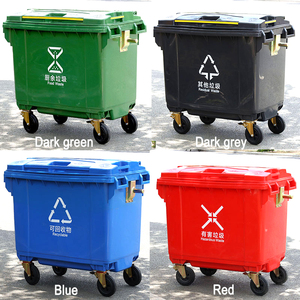















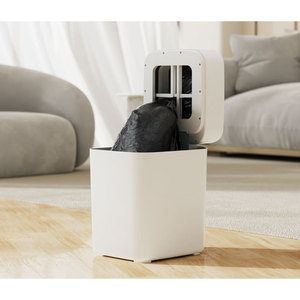
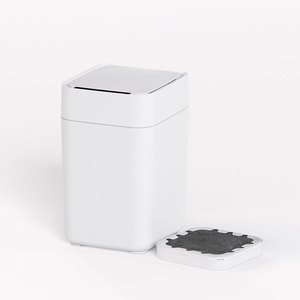
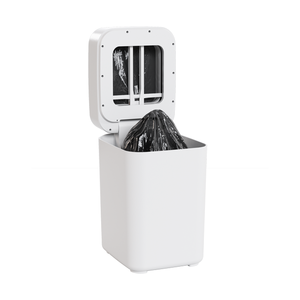
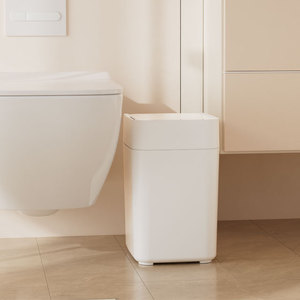
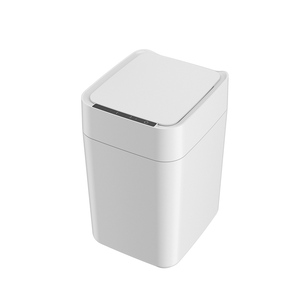
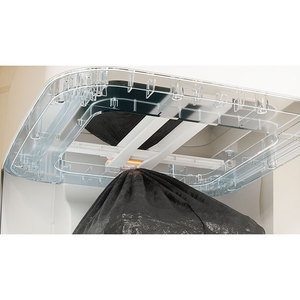





























































































The design of the waste bin is an important factor to consider when looking for an efficient way of keeping places tidy. There are various waste bins with different designs, each suited to specific needs and surroundings. Below is an overview of the different types of design waste bins.
Kitchen waste bin
This is a commonly used waste bin type found in households, restaurants, and other places where food is prepared. It collects kitchen refuse like leftover food, vegetable peels, and used utensils. Typically, it has a lid to keep odors contained and prevent pests from accessing the waste.
Compost waste bin
This bin is specifically for collecting organic waste that can be composted to reduce landfill waste and produce nutrient-rich compost for gardening. It usually has a carbon filter to control odors and comes in various sizes, both indoor and outdoor.
Indoor waste bin
Indoor waste bins are found in offices, schools, and homes. They come in many designs, sizes, and shapes, including pedal, push, and swing top bins. They are mainly used to collect paper, plastics, food, and other general waste. They play a crucial role in maintaining cleanliness and promoting recycling and waste segregation.
Outdoor waste bin
These refuse bins are crucial in public spaces like parks, streets, and parking lots to ensure proper waste disposal and cleanliness in outdoor areas. They are more durable and can withstand harsh weather conditions. They are larger than indoor bins and have features like anti-vandalism, easy-to-empty mechanisms, and animal-proof designs to prevent wildlife from accessing the waste.
Desk waste bin
This is a small waste bin placed on the desk in offices, schools, and homes. It is designed to collect small amounts of waste like paper, food wrappers, and other personal waste. It helps keep the workspace clean and organized. Desk waste bins come in various sizes and styles, including open-top, swing-top, and pedal bins.
Paper waste bin
Also known as a paper recycling bin or document disposal bin, this waste bin is specifically designed for collecting paper waste for recycling. It is usually found in offices, schools, and public places and is labeled to encourage users to dispose of paper separately from other waste. By using paper waste bins, people can easily recycle paper, which helps save trees and reduce landfill space.
Special waste bins
Specialized waste bins are used for collecting hazardous waste, which can be dangerous if not handled properly. They include biohazard waste bins, sharps containers, chemical waste bins, and battery disposal bins, among others. They are designed to safely store and remove dangerous materials and have features like leak-proofness, labeling, and secure locking mechanisms.
Design waste bins have many aspects. Considering these aspects is essential to creating a waste bin that is both functional and pleasing to the eye.
Functional requirements
The primary purpose of waste bins is to collect and contain waste. However, their design must address several functional requirements. First, a waste bin must have a sufficient capacity to hold the waste until it is emptied. The capacity is critical for maintaining hygiene and preventing overflow. Second, a waste bin must have a lid or cover to contain odors and prevent pests from accessing the waste. The cover should be easy to open and close, allowing users to deposit waste easily. Lastly, a waste bin must be easy to empty and clean. The design should allow for the removal of waste easily and the cleaning of the bin interior.
Materials
The material used in a waste bin is a significant aspect of its design. The material must be durable enough to withstand frequent use and exposure to the elements. Common materials used in waste bin production include plastic, metal, and wood. Plastic waste bins are lightweight, easy to clean, and affordable. Metal waste bins are durable and have a long lifespan. Wooden waste bins have a natural and aesthetic appeal, and the treated wood can be water and pest-resistant.
Shape and size
The shape and size of a waste bin significantly impact its functionality and usability. The shape of a waste bin can be rectangular, square, round, or triangular, and the choice of shape should match the environment in which the bin is used. For example, a rectangular waste bin is suitable for placement against a wall, while a round waste bin is suitable for placement in the center of a room. The size of a waste bin should be appropriate for its intended use. A small waste bin is suitable for personal use, while a large waste bin is more suitable for public places.
Aesthetic aspects
The aesthetic aspect of a waste bin is the visual appeal and style of its design. The aesthetic aspect includes color, style, and decoration. The color of a waste bin should be coordinated with its environment. For example, in a natural environment, the waste bin can use green or brown, while in urban environments, the waste bin can use gray or black. The style of a waste bin can be modern, traditional, or minimalist, and the choice of style should match the environment in which the bin is placed. The decoration of a waste bin can include patterns, logos, or labels, which can enhance the visual appeal of the bin and promote its use.
Design waste bins find usage in various industries, businesses, and commercial settings. Their stylish look helps to increase the aesthetic appeal of the place. But they also provide functionality and practicality to help people manage waste better. Below are some popular scenarios where these waste bins are commonly found.
Offices
Stylish waste bins play an important role in maintaining neatness and orderliness within workspaces. They encourage proper disposal of rubbish, thus creating a conducive environment for work. Elegant bins complement office decor, making spaces look professional and classy. Bins with multiple sections promote recycling initiatives among employees, leading to eco-friendly practices in the organization.
Shopping malls and retail stores
In such areas, trash cans are necessary to keep the space clean and tidy for the comfort of shoppers. It is important that these bins should be easily accessible, encouraging customers to dispose of their waste properly. Waste bins that match the aesthetics of retail spaces can be placed strategically throughout the store, enhancing the overall design. Some design waste bins are specifically meant for outdoor use in public areas like parks, streets, or plazas.
Restaurants and cafes
Restaurants require waste bins to maintain cleanliness on their premises, ensuring a pleasant dining experience for customers. Cafes can also have unique waste disposal solutions that match their theme or concept, adding to the ambiance. The design of these waste containers plays a vital role in their effectiveness. Clear signage and labels make it easy for patrons to identify where they should throw different types of trash, promoting proper waste separation.
Hotels
Hotels use elegant waste bins that align with the overall interior design, creating a sophisticated atmosphere. These containers are strategically placed in guest rooms, lobbies, and other common areas to ensure cleanliness and convenience for visitors. Hotels also embrace sustainability through hotels with dual-purpose design waste bins for recycling and non-recycling materials.
Museums and art galleries
These places use discreet waste containers that blend into the environment, allowing visitors to focus on the exhibits without distractions. Some galleries may have design waste bins as part of the exhibit, showcasing innovative designs or conceptual art pieces. Clear signage on trash cans helps maintain cleanliness by guiding visitors on proper disposal methods.
Healthcare facilities
Hospitals require specialized waste bins for different categories of waste, including sharp objects from medical procedures. Design waste bins help maintain cleanliness, prevent infections, and ensure safety within healthcare environments. Color-coded containers indicate where to dispose of hazardous, recyclable, and general waste, respectively.
From the perspective of business buyers, there are several important factors to consider when choosing design waste bins for commercial spaces. These factors include the following.
Brand image and aesthetics:
The waste bin should be consistent with the company's brand image and commercial space design. The style, color, and logo of the waste bin should match the overall decoration style of the commercial space to enhance brand image and visual impact.
Function and practicality:
Firstly, business buyers need to assess their needs and determine the types of waste that need to be disposed of in commercial spaces. For example, if the commercial space involves food and beverages, then design waste bins that are specifically for food waste and beverage cups should be considered. It is also advisable to consider the capacity of the waste bin to ensure that it can meet the needs of high-traffic periods. The design of the waste bin should be easy to use and empty to ensure that it can be easily operated and cleaned by staff.
Environmental sustainability:
Commercial spaces are also becoming more environmentally friendly. Business buyers can choose design waste bins that use recycled materials or have the ability to be recycled. Additionally, design waste bins that employ environmentally friendly coatings and manufacturing processes can also attract the attention of business buyers who value environmental protection.
Quality and durability:
Design waste bins in commercial spaces should have good quality and durability to ensure long-term use and reduced replacement costs. Choose waste bins that utilize high-quality materials and robust manufacturing processes. Additionally, business buyers can also pay attention to the after-sales service and warranty period of the product, which can provide protection and support for the product's lifespan and maintenance.
Compliance with regulations:
Business buyers should understand and comply with relevant laws and regulations regarding waste management and environmental protection in their local areas. They should choose design waste bins that comply with these regulations to avoid potential legal risks and penalties.
Q1: What are the benefits of using a design waste bin?
A1: A design waste bin can improve aesthetics, promote proper waste disposal, enhance odor control, and contribute to environmental sustainability within a space.
Q2: How can a design waste bin improve the aesthetics of a space?
A2: Design waste bins, like custom garbage bins, have stylish looks that can match or enhance the interior or exterior decor of a space.
Q3: What role does a design waste bin play in promoting proper waste disposal?
A3: These specialized waste bins encourage people to dispose of trash properly through their unique design features and markings.
Q4: How do design waste bins help control odors?
A4: The tight lids or sealed openings on some design waste bins contain smells from the rubbish inside them.
Q5: Why are design waste bins important for environmental sustainability?
A5: Some of these garbage bins are made to support recycling programs or use eco-friendly materials in their construction.